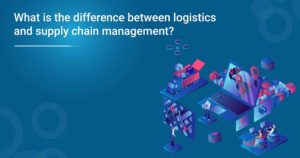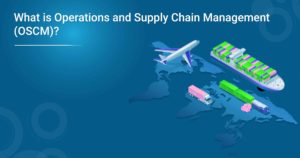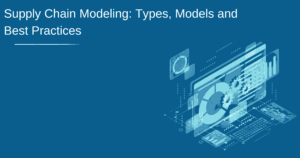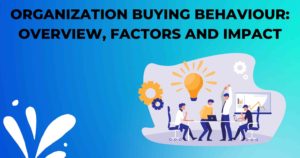organization Buying behaviour is an interesting concept to discuss and understand. It refers to the behaviour of consumers when it comes to purchasing products or services from organizations. But why does this matter? Organizations buy from other companies too, and those transactions greatly affect the business world. This article will look at an organization’s buying behaviour, what factors influence it, and how it can impact businesses. We’ll also explore tips for optimizing your own organization’s buying behaviour. Whether you’re an entrepreneur or a corporate executive, this information will be invaluable in better understanding why organizations make the decisions they do when buying products or services.
What Is Organization Buying Behaviour?
Organization buying behaviour is a process that businesses go through to purchase all the products and services needed for their operations. It includes researching, evaluating, negotiating and finalizing deals with suppliers. The main objective of organizational buying behaviour is to ensure that the organization gets the best possible deal in terms of quality, price and service from suppliers.
Organizational buying behaviour starts with recognizing customer needs such as raw materials or finished goods, equipment or services etc. Then research has to be done to identify potential suppliers who can meet these needs at competitive prices while providing good quality standards. After this step, evaluation takes place in which various aspects like supplier’s reputation & reliability are taken into consideration along with technical capabilities & pricing structures offered by them.
Negotiations follow after this phase wherein vendors try their best to meet customer requirements within their proposed budget limits. Once an acceptable agreement is reached between buyer & seller, it leads towards the concluding phase, where order details are finalized & payment terms are laid out before finally placing an order for the desired product/service from chosen vendor/supplier.
In conclusion, organizational buying behaviour could be defined as a systematic approach followed by companies when attempting to acquire necessary items required for running business operations successfully.
How does Organization’s Buying Behaviour work?

1) Needs/Wants: Organizations must first identify their needs and wants to determine what type of product or service they need to purchase. This includes evaluating the organization’s budget, desired features, size of the purchase, time frame for purchasing decisions etc.
2) Research Suppliers: Once organizations have identified their needs and want, they can begin researching potential suppliers capable of providing these products/services at an acceptable price point. They may also consider any affiliations with certain brands or other companies and supplier ratings on various platforms.
3) Select/Evaluate The Supplier: After conducting research, organizations should select one or two potential suppliers best suited for their particular needs and requirements before formally negotiating terms with them (e.g., pricing structure). Additionally, organizations can evaluate each supplier based on factors such as delivery timescales, customer service capabilities, etc., to ensure it fits within the framework set by the organization’s specific objectives before making a final choice about which supplier will be used for this project/purchase decision.
4) Negotiate Terms & Conditions: Once both parties agree upon terms and conditions related to pricing structures and timeline expectations, then both parties can enter into a contract formalizing agreement between them regarding said topics so that all involved understand what is expected out of this transaction moving forward before ordering/delivering goods or services being discussed hereinbefore mentioned above.
5) Final Decision: After considering these factors and reaching an agreement, the organization can make their final purchase decision. They should ensure that they are obtaining value for their money and that the supplier they have chosen is reliable and trustworthy. They should also consider any potential risks associated with this supplier before committing.
Organization buying behaviour is a complex process, but understanding each step can help organizations make informed decisions about which suppliers to use for their needs and wants.
Also read: Product Management: A Beginner’s Guide
What Are The Features of Organizational Behaviour?
- Attitude: Organizational behaviour focuses on studying individual and group attitudes within an organization, such as job satisfaction and commitment to organizational goals.
- Communication: It studies how communication flows between members of the organization, including both verbal and non-verbal forms of communication.
- Leadership: The study of leadership styles, traits, and effectiveness in motivating employees and developing a shared vision is part of organizational behaviour research.
- Power & Influence: This covers how power is distributed among various organisational roles and how influences can be used to effect change or achieve desired outcomes from work groups or teams.
- Decision-Making Processes: Organizations need effective decision-making processes to remain competitive in today’s rapidly changing marketplace. These processes are studied through organizational behaviour theories and game theory or system dynamics modelling techniques.
- Group Dynamics: Organizational behaviour also looks at team dynamics–how people interact with each other when working together as a team towards achieving common goals — covering topics like conflict resolution/management, creativity/innovation management etc.
- Motivation: Organizational behaviour examines what motivates individuals in different ways – whether it be intrinsic rewards (like a feeling of achievement) or extrinsic rewards (such as bonuses). It uses this knowledge to determine methods that will help motivate employees more effectively, which enhances their productivity levels overall.
- Communication: This is essential for any organization because it enables the effective exchange of information between different departments and personnel within the company, leading to better understanding, cooperation among parties involved, and smoother functioning operations overall.
Factors Affecting Organizational Buying Behavior
 Economic Factor
Economic Factor
Economic factors play an essential role in the buying behaviour of organizations. When purchasing decisions, organizations consider economic conditions such as inflation, taxes, interest rates and consumer income levels. The economy’s stability profoundly affects how much money businesses are willing to spend on goods or services. If a company operates in an uncertain economic climate, it will likely be more conservative with its spending and opt for cheaper products.
Economic factors have a major influence on organizational buying behaviour due to their direct impact on profitability and cost savings opportunities. On the other hand, if a business is flourishing in a healthy economy with low unemployment and rising wages, it may be inclined to invest more money into higher-quality products to help it stay ahead of its competition. Additionally, companies must factor in their budget before making any purchase decision which limits what they’re able to purchase within their desired price range.
Technological Factor
Technology is playing an increasingly important role in influencing organizational buying behaviour. Technological advances can create new opportunities for firms to reduce costs and increase efficiency, leading to changes in purchasing decisions. For example, automated solutions such as robotic process automation (RPA) or AI-driven decision-making are becoming more popular among organizations because they allow them to free up their time and resources while also optimizing their operations.
Technology can also influence the types of vendors that organizations choose and the products and services they purchase.
Organizations may look for suppliers who have invested heavily in innovative technologies or those with a proven track record of successful technology deployments. Additionally, technological trends such as cloud computing or big data analysis are driving organizations towards vendors that provide these capabilities so they can stay competitive in their industries.
Political and Legal Factors
Political and legal factors have a major influence on organizational buying behaviour. Government policies, regulations and laws determine the terms of purchase for many organizations, such as labour laws and environmental regulations. These factors can limit what an organization can buy or receive in terms of goods/services as well as how much they can spend on certain items. Additionally, taxes, subsidies, tariffs and other government incentives affect the cost of acquiring products from suppliers, which impacts organizational buying decisions.
Political unrest or changes in government leadership also have a huge effect when it comes to decision-making regarding purchasing patterns, as do ethical considerations about sourcing products from different countries or regions (e.g., boycotts). Ultimately, political and legal forces shape an organization’s ability to purchase certain items within their budget constraints and their moral obligation to make ethical choices while doing so.
Social Responsibility Factor
Organizational buying behaviour is heavily impacted by the social responsibility factor. Companies are now more conscious of their impact on society, leading them to consider how their decisions affect the bottom line, the people and environments in the local community, and beyond. Corporate social responsibility initiatives such as donating a certain percentage of profits to charities, reducing environmental footprints, or offering employees additional benefits and support can influence purchasing decisions.
Consumers today expect companies they purchase from to be transparent in their actions, making it important for organizations to act responsibly while still maintaining competitive prices. Organizations that actively demonstrate socially responsible behaviours may gain an edge over competitors who do not prioritize these values, ultimately resulting in increased sales.
Organizational Factor
Organizational factors play an important role in influencing organizational buying behaviour. These factors include organizational structure, size and resources such as budget, staff availability and technology. The larger the organization is, the more complex its decision-making process becomes due to the different stakeholders involved in making decisions. Additionally, the higher the budget available for purchases determines how much a company can spend on products or services being bought.
Furthermore, staff availability also directly impacts whether they have enough people to undertake research and make informed decisions when it comes to spending money. Lastly, technology makes it easier for companies to do research online, affecting their buying choices and getting access to industry trends and new products quickly. These organisational factors directly affect an organization’s buying behaviour, making them fundamental elements of consideration by buyers before committing any expenditures.
Risk Attitude Factors
Risk Attitude Factors are an important determinant of organizational buying behaviour. They refer to the degree of risk aversion or comfort with taking risks when making purchasing decisions. This can influence how much research and consideration is given when choosing suppliers and what type of alternative solutions may be sought. Purchasing managers may be more likely to choose a well-known vendor if they have a low tolerance for taking risks, but those with a greater risk appetite may consider less familiar vendors that offer better pricing structures or other advantages.
Additionally, different departments within an organization may have varying levels of risk attitudes, which could affect the overall decision-making process and outcome. Understanding these factors can help organizations make informed decisions about their supplier selection processes and ensure the best possible options are being considered for each situation.
Interpersonal Factors
Interpersonal factors are an important factor in organizational buying behaviour. Interpersonal relationships and interactions between buyers, their peers and outside organizations can significantly impact how purchases are made. In particular, the influence of key decision makers such as senior management or influential people within the organization can play a major role in influencing buying decisions.
Additionally, informal networks within an organization often help shape purchase decisions by providing information and support that is unavailable through formal channels.
Interpersonal dynamics such as power differentials between parties involved in buying processes also affect organizational purchasing behaviour; for example, suppliers may exert more influence over buyers if they possess superior bargaining power due to market dominance or industry expertise. Understanding interpersonal factors are, therefore, essential for understanding organizational buyer behaviour.
Psychological Factors
Psychological factors heavily influence organizational buying behaviour. These factors can refer to the emotional state of individuals in a company, which affects their decision-making abilities and preferences when purchasing. Furthermore, individual attitudes towards various products or services can also influence organizational buying decisions. For example, if employees have strong positive feelings about a particular brand, they may be more likely to recommend it over competitors’ offerings.
Conversely, negative emotions towards certain brands may lead people to not purchase from them at all. Additionally, perceptions of quality and price are key psychological considerations that need to be considered when evaluating potential purchases for a business venture. Understanding these elements can help organizations make better-informed buying decisions to satisfy their customers’ needs while optimizing costs for the company itself.
What Are The Impacts of Organizational Buying Behaviour?
- Increased Competition: Organizational buying behaviour can lead to increased competition between vendors and suppliers, resulting in better products and services at lower prices.
- Improved Productivity: Organizations with a well-defined purchasing policy can make more informed decisions when selecting their suppliers, leading to improved productivity by obtaining the right quality of goods at the best price.
- Price Stability: When organizations purchase from a limited number of suppliers or manufacturers, they tend to develop long-term relationships with them, which helps to ensure pricing stability over time.
- Risk Reduction: Organizations that follow a standard procedure for their purchases are less likely to face any supply chain issues than those that do not regularly adhere to any specific policies or procedures for purchasing materials and components from different sources.
- Improved Relationships With Suppliers & Vendors: Following an organized approach in dealing with vendors & suppliers helps create mutually beneficial relationships wherein both parties strive towards improving their respective performance levels while achieving profitability objectives and shared value creation goals over the long term.
- Higher Quality Products & Services: By carefully assessing all potential options on offer – such as cost, delivery times, and product/service quality – companies can take advantage of economies of scale by negotiating bulk discounts for higher-than-average order quantities in exchange for improved quality standards across all items purchased.
Conclusion
Organization buying behaviour is a complex process that involves multiple stakeholders, factors and impacts. It relies on the internal culture of an organization, as well as external environmental forces. Organizations can better anticipate their customers’ needs and develop strategies to improve customer satisfaction and loyalty by understanding these factors.
Organizations must also be aware of the potential for ethical issues related to purchasing decisions and take steps to ensure responsible decision-making processes are in place when it comes to their buying activities. Ultimately, by understanding organisational buying behaviour, organizations can more effectively manage purchasing operations while creating opportunities for increased efficiency and profit margins.
Our Executive Development Programme in General Management is the perfect opportunity to learn in-depth about organizational buying behaviour. With this programme, you will develop an in-depth comprehension of the principles that drive organization buying behaviour today. Through our interactive curriculum, you will gain a comprehensive understanding of how businesses make decisions when it comes to purchasing goods and services. We’ll cover market analysis, pricing strategies, supplier selection criteria and more. You’ll also have access to experienced professionals with industry knowledge who can guide your learning journey.
More Information:
Understanding Talent Management And Its Importance
What Is Supply Chain Management And Why Is It Important?
What is Strategic Human Resource Management? Definition and Examples
What is the difference between logistics and supply chain management?


























